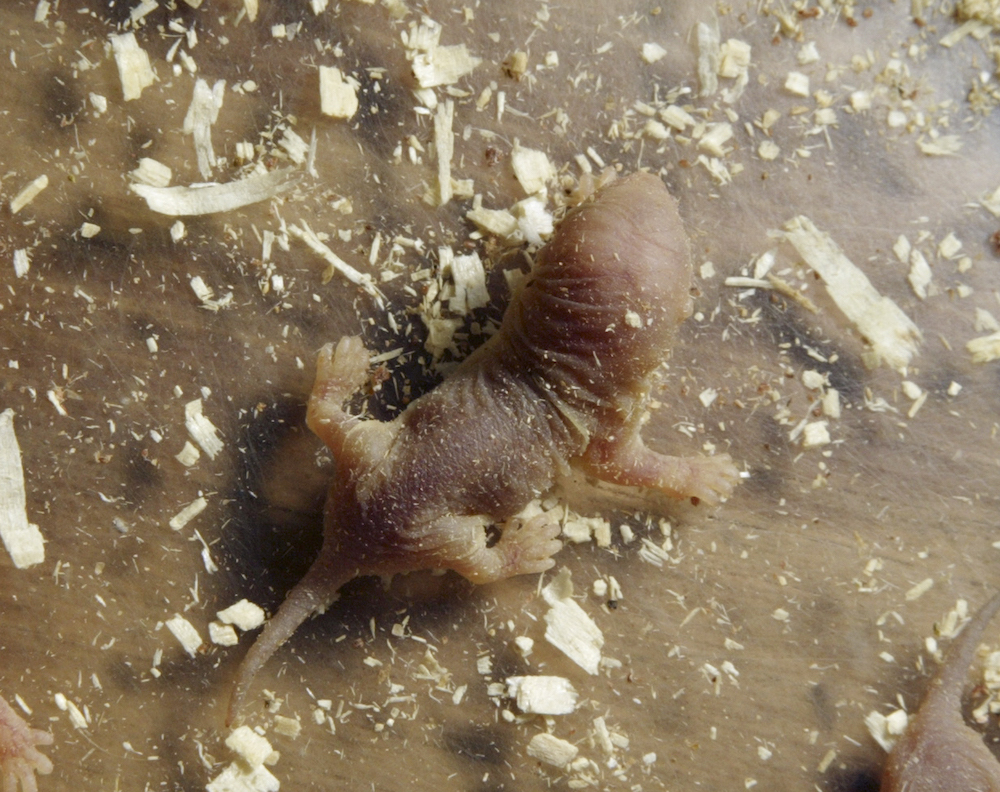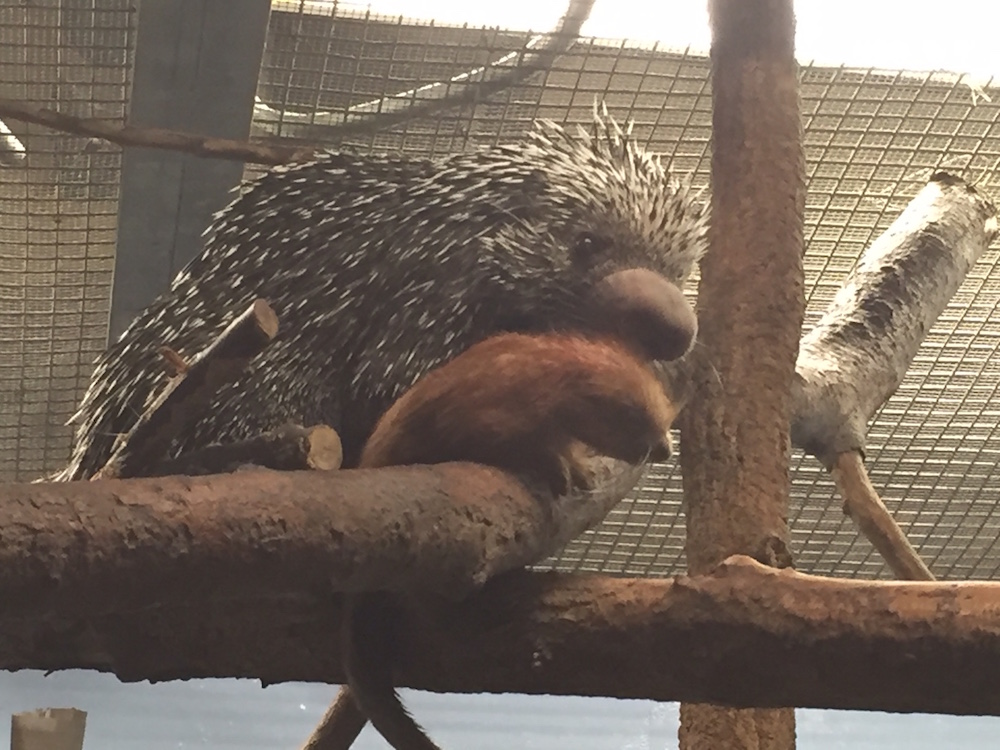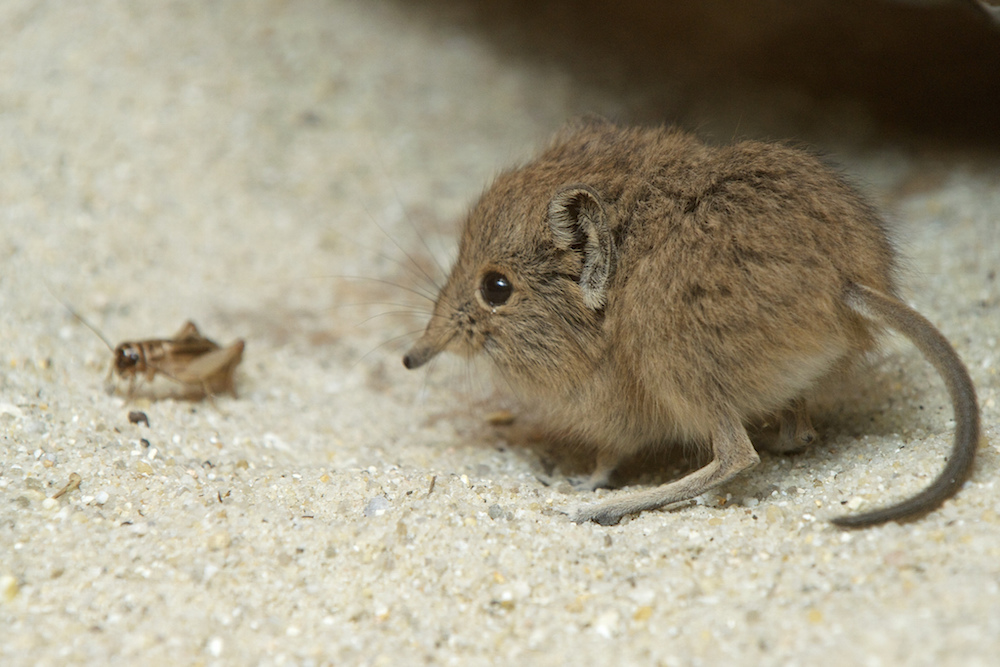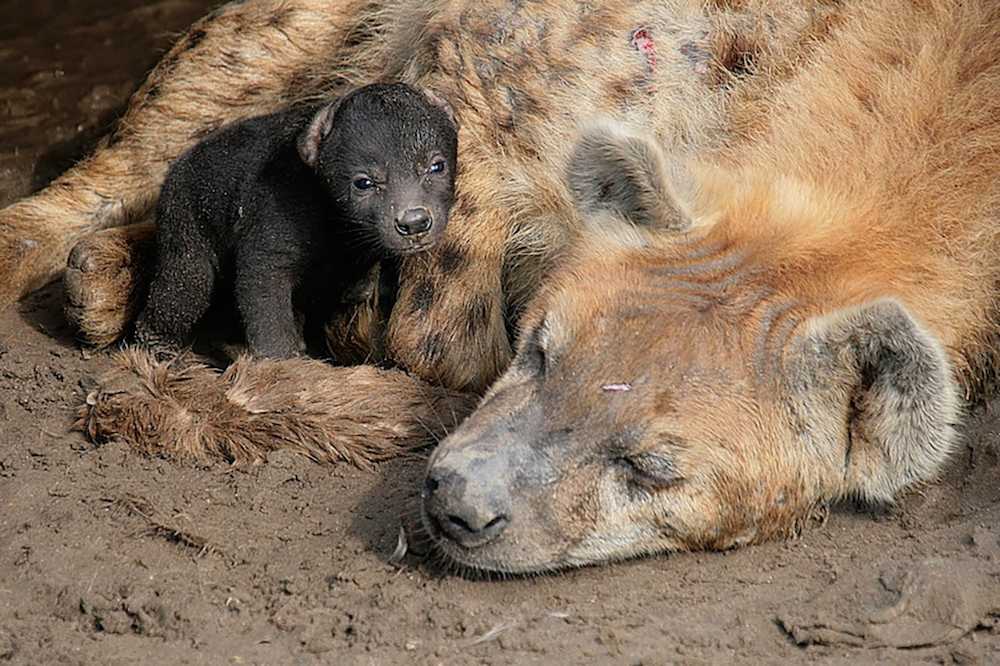Are Humans The Only Animal That Experiences Pain During Child Birth
Animal Moms Have It Tough! 8 Extreme Creature Births
Extreme births

Giving nascency to the next generation can be an farthermost issue for mothers (and, if you're a sea horse, fathers) in the brute kingdom.
In appreciation of all the mothers out there on Female parent'south Day, Live Science has compiled a listing of the 8 nigh farthermost animal births. Read on to run into beautiful animal babies, and to gain a new respect for the mothers who went through great feats to bring their children into this earth.
Naked mole rats

Naked mole rats (Heterocephalus glaber) are incredibly social mammals that live in colonies. Just each colony has just one reproductive female: the queen.
She isn't part of a family unit line, however. Rather, if another female wants to become queen, "she has to become up to the current queen and impale her," said Kenton Kerns, the banana curator of small mammals at Smithsonian'southward National Zoo in Washington, D.C.
Once she becomes queen, the matriarch starts having babies, usually nearly 10 to 15 at a time, which is fairly similar to the number of pups birthed by other rodents, such equally mice or rats. Withal, the number of the litter grows over time. That's considering naked mole rats are the only mammals whose bones grow after they reach adulthood, Kerns said.
"Every time the [queen] gets pregnant, her intervertebral disc space — the space betwixt her vertebrae on her spine — will become just a tiny bit bigger, and so bigger and bigger every fourth dimension she has a litter," Kerns told Live Science.
At her top, the queen can requite birth to a litter of 33 babies, each about the size of a "robust kidney edible bean," he said. This litter size is the largest of any mammal on Earth, Kerns said.
Prehensile-tailed porcupine

The prehensile-tailed porcupine (Coendou prehensilis) from Southward America goes through ii farthermost events during nativity. For starters, these porcupine babies are born fully quilled. The quills are soft in the womb, but harden one time exposed to air. Even so, giving birth can be difficult, peculiarly if the babe is born breech (lesser beginning), Kerns said.
The 2d extreme factor comes from the place of the nascence: a tree. Kerns said he has never seen a newborn porcupine autumn out of a tree, but it likely happens in the wild occasionally.
"The last one nosotros had here [at the National Zoo], we watched him cling for love life onto a branch while the umbilicus was coming off," Kerns said.
Tenrec

The tiny tenrec looks like a cross between a shrew and a hedgehog, but it is neither. In fact, this animal is more closely related to the elephant than to either of these animals.
Tenrecs are covered with spines. Different the porcupine, whose quills have barbs that can become stuck in the peel of predators, the tenrec keeps its spines its entire life.
Still, only similar the porcupine, the tenrec mother must requite nativity to a spiky infant. The spines are soft in the womb but harden once they hit the air, as with the porcupine. But the prehensile-tailed porcupine commonly has just one baby at a time. Tenrecs have between two and 10 babies per litter, which is a lot of spikes to bargain with, Kerns said.
Brusk-eared elephant shrew

The brusque-eared elephant shrew (Macroscelides proboscideus) is tiny; it measures almost 4 inches (10 centimeters) long and weighs no more than i.five ounces (43 grams), co-ordinate to the National Zoo.
Just Mom'southward weight tin increase past fifty percent when she has 2 babies. Each newborn weighs about 0.3 ounces (10 yard), so a litter of two would weigh about twice that.
"Think about being xl thousand [originally] and having xx g [0.7 ounces] worth of babe," Kerns said. "That is half of your body weight when yous're not pregnant that you just gave birth to."
Giraffes

The giraffe's birth is extreme considering of the long drib the babe takes the moment it enters the outside world.
In a typical giraffe birth, the baby'due south forepart hooves poke out of the female parent first, followed by the nose and head. After most 30 to lx minutes of labor, the mother pushes the baby out. Then, the calf unceremoniously drops well-nigh half dozen.5 feet (two meters) to the ground, making a terrific thud.
It might sound inhumane, merely the fall is necessary. It ruptures the amniotic sac, allowing the infant to start animate on its ain, Laurie Holloway, a spokesperson for the Dallas Zoo, told Live Science in 2011.
Spotted hyenas

Spotted hyena births are not for the faint of heart. In the final stages of pregnancy, loftier-ranking female person spotted hyenas (Crocuta crocuta) expose their fetuses to high levels of androgen, a male sexual practice hormone linked to assailment, Alive Science previously reported.
This extra androgen can make the pups more aggressive, giving them an edge over their peers, but it tin can also crusade the mother's reproductive organs to grow. For instance, the clitoris, which contains the nascency canal, can extend 7 inches (18 centimeters) from the body, Kay Holekamp, a professor of integrative biology at Michigan State University, told Live Science in 2006.
"Imagine giving birth through a penis," Holekamp said. "Information technology's really weird genitalia, simply information technology seems to piece of work. Although giving birth through a 'penis' isn't a trivial problem."
What'due south more, the hyena's birth canal is just an inch (two.5 cm) in diameter, and a ii-lb. (0.9 kilograms) pup can rip through the tissue as it exits the mother. Poor Mom can die from these rips, as is evidenced past the high death rate among beginning-fourth dimension hyena mothers, Live Science reported.
Kiwis

The kiwi's egg occupies upwards to 25 percent of its mother's body, making it the largest egg, proportional to body size, of any bird in the world, co-ordinate to the American Museum of Natural History (AMNH) in New York City. That's i egg-treme egg to lay!
Due to the egg's size, kiwi birth is equivalent to a craven laying a 1-lb. (0.four kg) egg or a human giving nascency to a iv-year-old child, co-ordinate to Audubon.
Luckily, there'southward an upside to mom's large load. The egg is then big that the baby is fairly adult by the time information technology hatches, according to the AMNH.
Humans

Humans tin can also take farthermost births. For one affair, it tin be fatal to the mother: About 830 women die from preventable causes related to pregnancy and childbirth every solar day, according to the World Health Arrangement (WHO). However, admission to health care is improving, the WHO said. Between 1990 and 2015, maternal mortality dropped by about 44 per centum worldwide, the WHO reported.
Fifty-fifty when it's not deadly, human being birth can be extreme for the mother. Women who go into labor experience contractions, a tightening of the uterus that works to push button the baby downwards the birth culvert, according to the American Pregnancy Association. Their neck dilates, and then they push until they evict both the infant and the placenta.
If a cesarean (C-section) is needed, doctors will make an incision through the abdominal and uterine walls so that the physicians tin pull out the baby, the association said. In the Usa, almost 32 pct of all births are C-sections, co-ordinate to the Centers for Disease Control and Prevention.
Human babies demand a lot of TLC — tender love and care. Simply they can help make a loving family … and possibly even a Mother'due south Day card if they remember when they're older.
Source: https://www.livescience.com/59094-extreme-animal-births.html
Posted by: greenfieldbutivene.blogspot.com

0 Response to "Are Humans The Only Animal That Experiences Pain During Child Birth"
Post a Comment